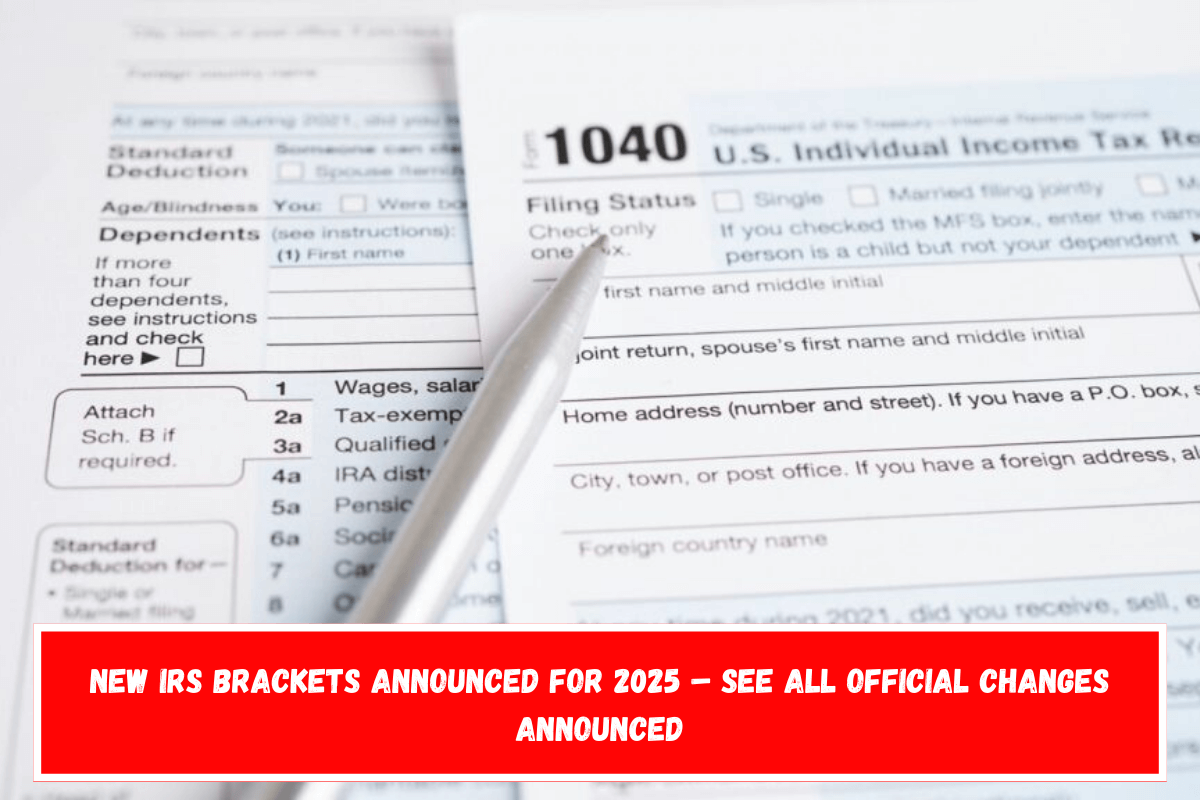If you’re already thinking about the new year, there is good news: the Internal Revenue Service (IRS) has already announced the tax changes for 2025. These include new tax brackets, the amounts of the Earned Income Tax Credit (EITC), and the new standard deductions. This means that it should be easy to get up to speed in time.
The announced rules are for the 2025 tax year, so the results will show up in the 2026 tax reports. The next tax season, from January 2025 to April 2025, is for the 2024 tax year, and those rules have already been in place for a year.
The most important thing that will change about the 2025 tax year is that the tax rates will be changed. These changes are made to fight inflation and keep people from having to pay more in taxes when their wages keep up with inflation but they don’t get a real pay raise. Bloomberg Tax says that when tax rates are widened and exemptions and credits are increased, most taxpayers pay less in taxes.
New IRS Tax Brackets for 2025
Overall, the system will stay the same. There will still be seven tax levels, with 37% being the highest. To account for inflation, the rest of the tax brackets have been changed by 2.8%. This helps some taxpayers by letting them pay less tax on a larger part of their income. Here are the new tax rates and ranges:
| Tax Rate |
Individual Income Range | Joint Filers Income Range |
| 10% | Up to $11,925 | Up to $23,850 |
| 12% | $11,926 – $48,475 | $23,851 – $96,950 |
| 22% | $48,476 – $103,350 | $96,951 – $206,700 |
| 24% | $103,351 – $197,300 | $206,701 – $394,600 |
| 32% | $197,301 – $250,525 | $394,601 – $501,050 |
| 35% | $250,526 – $626,350 | $501,051 – $751,600 |
| 37% | Over $626,351 | Over $751,601 |
As we have explained, the 37% tax rate is the only one that remains the same form 2024

Standard Deduction Increase for 2025
A standard deduction rise is another change that has been made. There are two types of deductions: itemized deductions and standard deductions. Deductions lower the amount of taxed income that people have to pay.
Itemized deductions don’t change because they are sent in separately for a set amount of money that changes each year. The standard deduction, on the other hand, is the same for everyone and needs to keep up with inflation because it is meant to make filing easier. These are what the new minimum deductions are:
- Individual filers: will see an increase of $400, reaching $15,000.
- Joint filers: will see an increase of $800, reaching $30,000.
- Heads of household: will see an increase of $600, reaching $22,500.
Changes to the Earned Income Tax Credit (EITC)
The EITC helps low- to moderate-income workers and families get a tax break. Although it is higher for families with children, you do not need to have offspring to qualify for it. The new amounts are:
- Eligible taxpayers with no children: maximum credit of $649.
- Eligible taxpayers with one child: maximum credit of $4,328.
- Eligible taxpayers with two children: maximum credit of $7,152.
- Eligible taxpayers with three or more children: maximum credit of $8,046
Why 2025 is a Pivotal Year and Potential 2026 Tax Increases
Some short-term tax changes, like the Tax Cuts and Jobs Act (TCJA) that was passed in 2017, will end in 2025. The TCJA lowered tax rates for both individuals and businesses, raised the standard deduction and family tax credits, got rid of personal exemptions and made it less useful to itemize deductions, limited deductions for state and local income taxes and property taxes, eliminated the alternative minimum tax for businesses but not for individuals, doubled the estate tax exemption, and lowered the penalty for not following the Affordable Care Act‘s individual mandate.
Also See:- New closures announced this week by major US banks – Official list of closed branches















Leave a Reply